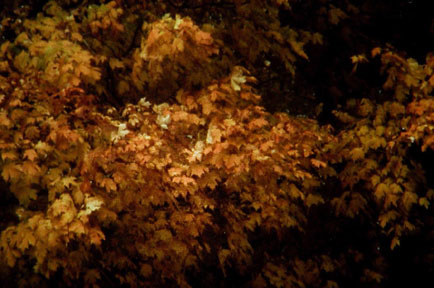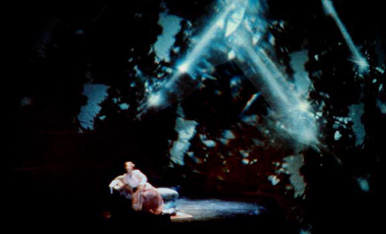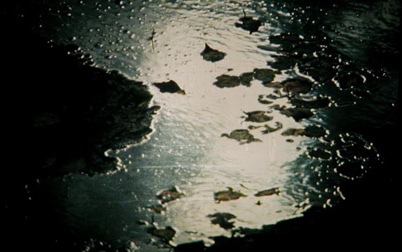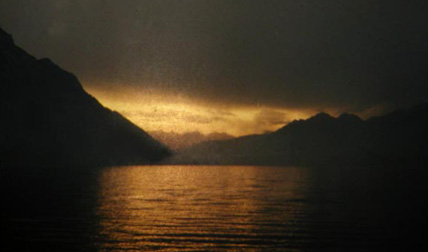|

all photographs can be clicked to access a larger version

Gerde consults her Nanny on the eve of her engagement as her friends romp and play.
FENNIMORE AND GERDE is the last opera of the English composer, Frederick Delius. Cosaro and Chase had a curious history with this admired but seldom played composer. Their first collaboration, KOANGA, was an opera about slaves Delius wrote as a young man. Their production of A VILLAGE ROMEO AND JULIET was one of the hits of the Washington Opera, and went on to run at the New York City Opera as well. Both operas received recordings and attention they had not received before—Delius' opera music seemed to take on a new life when aided by film and projection. Richard Gaddes, then director of the Opera Theater of St. Louis, proposed a production of FENNIMORE. The opera involves a love triangle between a writer, an artist and an exceptionally complex woman in which the music is spare and to the point; the scenes terse, understated and Bergmanesque.


Autumn
Two costumes
From an interview in Opera Monthly:
"My first reaction was, 'Oh, no. Not another Delius opera! because, while I'd learned to appreciate Delius' unique talent by working so closely on his operas, I'd never been a real fan of his work.' But when I heard the music and read the libretto, I changed my mind. The libretto was far more sophisticated than any I had read (with the exception of the Berg pieces, the Stravinsky and some Britten) and I wondered if the idea of film had passed through the composer's mind. Fennimore was a new experience for me, because we had only a lame recording to go by, so you couldn't really know how it was going to sound."

Dark water.
More costumes
Chase continued:
"Our innovations included bridging the scene changes with natural sound (wind, ocean, forest, church bells) over which we played film and projections that defined the seasons and the passing of time. When we added the sound interludes, and new scenes, we were still acting on the instinct that this was a highly unusual and sorely neglected opera. The sound tapes helped Frank to create pantomimes which rounded out the characters and filled n parts of the story that were only hinted at in the text. We didn't have proof of our success until the first dress rehearsal, when I realized that I was watching a masterpiece. With the passionate acting in place, the intimate theater, and a stunning orchestra in the pit, Fennimore became a real story, truly and deeply felt, about real people. It made all of my years working in the theater seem worthwhile."


OPERA NEWS:
As if to visualize Delius' rhapsodic writing, Chase created harsh and idyllic images of nature, with light, water and foliage projected on the double level of a convex front scrim and another stage rear. As scenes evolved and faded with extraordinary sensitivity to mood it forged a microscopic dreamworld that kept mind and imagination engaged for the full eighty minutes.
OPERA MAGAZINE:
In and out of this enchanting dream landscape the characters materialized, held forth and vanished. The result was something more than a miracle, for here, 70 years after its conception, a stillborn work had be transformed into a deeply affecting, almost Chekovian drama, allowing release of the expressive power of its score for, surely, the first time.
ST LOUIS COURIER JOURNAL
(The production) approached the level of a masterpiece—absolutely riveting from start to finish, and extraordinarily beautiful.
THE NEW YORK TIMES:
...the visual effects were not only hypnotic in their own right; they also reinforced at every moment the changing moods of the score.

The sea
|
|